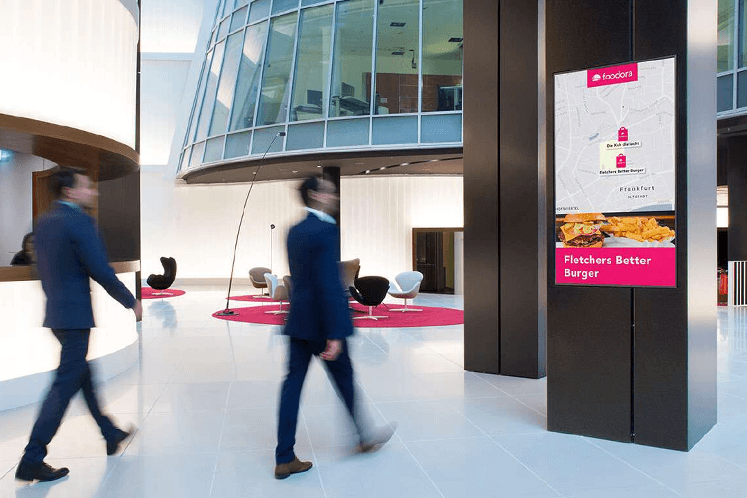Relevant Content
Of course, along with understanding your dwell time, it’s just as important to fill that time with relevant messaging. This could factor in elements like the environment or location.

“Include relevant, useful information to make the content helpful as well as informative,” suggests Smith. “A great example of this is a Virgin train ad comparing the amount of time it would take to arrive to a destination by car and by train. It’s a simple idea, but it’s informative and effective.”
Another question to ponder: Are demographics relevant to each specific message? In other words, should a message be tailored to reach different audience sets? And furthermore, are there useful tactics to attract those viewers who might be more comfortable with digital applications than others?
“Incorporate social data and user-driven content,” advises Smith. “Getting the consumer involved in the ad helps increase awareness, viral potential, recall, etc. Keep in mind that when doing this, it’s important to ensure that the platform used has moderation included.”
Because of the constant interaction that results from social media applications, involving this kind of content in a digital sign should enhance viewers’ experience. For the content provider, this is not only effective but also relatively simple to implement.
“You could argue that using social media is a form of content automation as it is a steady stream of new and fresh content that is relevant to a specific college or hash tag,” Cahoy says.
Content Applied
Today, digital signage applications can be found in almost any location imaginable. If there are crowds to reach, a digital sign is a suitable solution.
"If there are crowds to reach, a digital sign is a suitable solution."
“Any location where digital signage can provide useful information to someone on the go is always helpful,” says Smith, citing malls, entertainment venues, and other high-traffic areas as viable locations.
And with this type of signage on the rise, it is becoming more prevalent in previously untapped areas. “I think we are seeing signage pop up in nearly every environment and new and creative uses are surfacing every day,” Cahoy says, pointing to projects that he has recently executed. “At Rise we do a lot with education, so in the context of those users I think content automation is important to help keep screens fresh—in the business school, automating to show live financial quotes—in the hallways, tying into an event management system—or for donor walls, tying into a managed listing of donors to ensure the content is always correct.”
Read Part 1 - Read Part 2 - Read Part 3 - Read Part 4
Article written by Ryan Fugler and reposted with permission from Sign & Digital Graphics.




